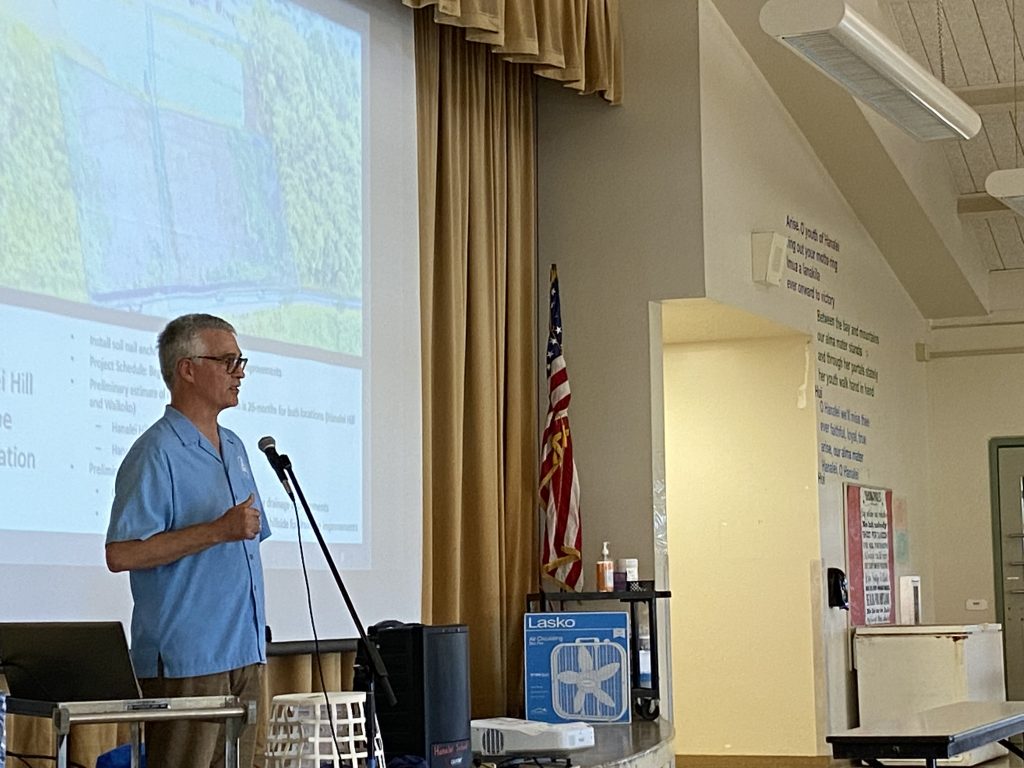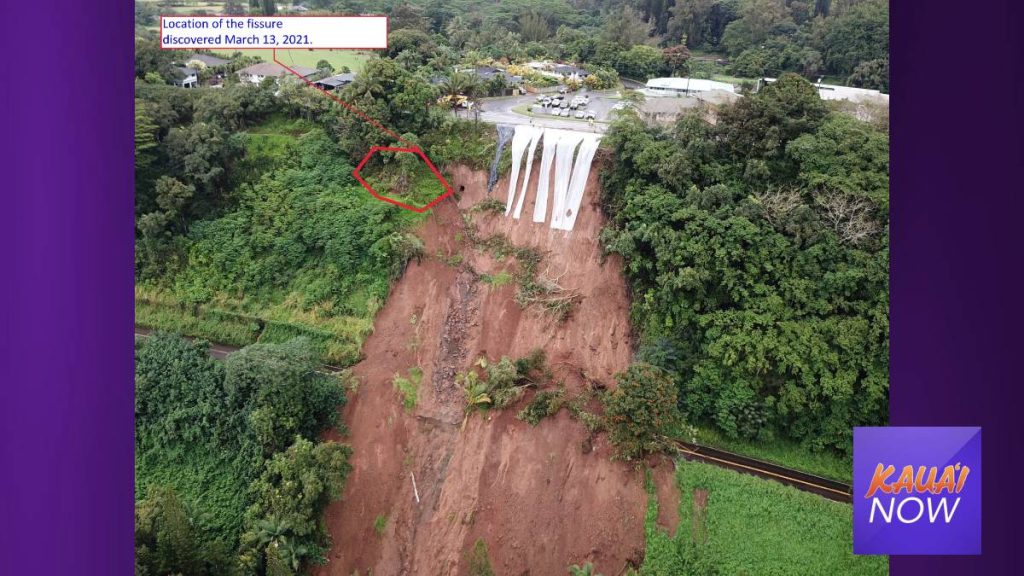N. Shore Residents Express Frustration Over Hanalei Bridge Repairs During HDOT Community Meeting
By Amanda Kurth
The Hawai‘i Department of Transportation hosted a public informational meeting for Kaua‘i’s North Shore communities on Wednesday, June 8, at the Hanalei School to provide updates, present information and collect public feedback on several ongoing and upcoming projects in the area.

From bridge repair to bank erosion, Kūhiō Highway projects to Hanalei Hill, and the Waikoko Slope stabilization, the community did not hold back their concerns. The project that drew the most ire from residents was Hanalei Bridge, which sustained severe damage during flooding events in 2018 and a landslide just last year.
HDOT officials gave residents an update on repairs to the bridge and a possible installation of a traffic signal to ease commuter congestion.
Constructed in 1912, the bridge is still just a one-lane structure that requires drivers to exercise some courtesy in taking turns crossing. Following the April 2018 flood events, emergency repairs were made to Hanalei Hill and Waikoko Slope. However, the soil drainage improvements and anchored wire mesh system installed did not prevent a second landslide nearly three years later in March 2021, which cut off the North Shore community for several days from the rest of the island.
During Wednesday’s meeting, Kaua‘i District Engineer Larry Dill said the main part of work planned for Hanalei Bridge includes rehabilitating the structure.
“We’ll replace as much as we can to maintain historic components — it is a bridge that is on the National Register of Historic Places,” Dill said.
The state plans on following the historic standards of the United States Secretary of the Interior, maintaining as much historic integrity of the bridge, which they stated was, “a pretty good standard.”
One meeting attendee asked why the bridge was neglected like this, pressing further, “Why? Why? You should have an answer.”
“I don’t have a good answer for that, but it’s a great question,” Dill responded, adding, “I agree with you, we’ve had a hard time maintaining our bridges, and it takes a long time to get federal funds.”

A temporary bridge alternative was considered but was not selected due to environmental impacts and associated permitting requirements.
Not only will the entire supporting timber work be replaced, and the bridge painted, but the state also noted the project will begin in early 2023 and will likely proceed with a 12-month nighttime project, five days a week.
While speaking to Phase 2 of emergency construction repairs to Waikoko Slope, Dill stated, “I’m not sure at this point, whether or not we’re going to get the federal funding to improve that part of the work or not.”
“I understand there’s a bit of water coming down the hill,” said another concerned attendee, adding, “What are you planning on doing with that?”
“We’re going to be constructing drainage improvements, building a drain down the slope which will feed into a new storm drain all the way to the bridge down below,” Dill said in response.
And while the project schedule is also projected to begin in early 2023, the preliminary plans about road closures and one-lane access worried residents who have already been plagued with traffic congestion, roadblocks and parking nightmares.
One concerned resident mentioned the impact on locals of over-tourism on the North shore that already backs up traffic for miles at the peak hours of the day.
“It’s been since 2018,” said Auntie Louise, a fired-up North shore resident who didn’t want to be identified by her last name, adding, “If you guys listened to the community back then we wouldn’t be sitting here talking about it now. I am finished! We have been in lockdown, we have been in convoys, we just can’t take this anymore!”
Auntie Louise continued, “I’m not so worried about our residents, I’m worried about all of their people, the tourists, because when they get stuck down here, we got to feed them, we have to make sure they have water.”
When the state representatives were pressed further if they could guarantee preventative measures for a future landslide in the area, they said they are confident in the work that they do.
The discussion turned its focus on the rapid erosion conditions of the Hanalei Riverbank. The state indicated heavy rain events from March 2021 resulted in a portion of the road’s guardrail falling into the river.
Stabilization efforts are anticipated to include one or more of the following: ungrouted riprap, rock marine mattresses, vegetated earth reinforced walls, and sheet pile walls.
And while the state notes that these tasks are significant for everyone to overcome, some say not enough is being done.
Kamealoha Smith, a Native Hawaiian from Anahola, turned the conversation toward native youth outreach and education on the matter.
“I put a proposal together for the state, not because I was trying to compete with the big contracting companies or HDOT, but there’s a role for us who believe in traditional ways of doing things,” Smith said, adding, “Native Hawaiians are recognized and have a trusted relationship with the U.S., and that should mean something to them,” when describing traditional engineering and working at the county level on issues of engaging the native youth and future generations.
“…It’s time for the state to be more inclusive of those things that happened in the past, helping to bridge misunderstandings of native peoples and the land,” Smith said.
For more information about this public community meeting, visit the Hawaiʻi Department of Transportation website here.
Sponsored Content
Notice: Function the_widget was called incorrectly. Widgets need to be registered using
register_widget(), before they can be displayed. Please see Debugging in WordPress for more information. (This message was added in version 4.9.0.) in /mnt/efs/html/wp-includes/functions.php on line 6114




